
Learning In the Midst of the New Normal
Alexis Joy Viloria | Maui High School
In the midst of a raging pandemic, schools across the country are gearing up their schools to welcome students in the safest way possible. While many other countries lowered their case numbers and created models for on-campus classes, the United States needs to take even more caution as case numbers rise to over 3 million country-wide. Germany, for example, started to accept students on campus only after testing negative through self-administered viral tests and adhering to social distancing measures to further reduce risks of exposure even as cases slowed down. Implementing measures such as face masks, social distancing, less on-campus days, many states are ready to let students in despite the current climate surrounding the coronavirus. Recently, the Hawai‘i Department of Education (HIDOE) has joined the ranks of them.
With its 2020–21 school year models, the HIDOE announced guidelines to be followed for the upcoming school year in order to curb the spread of the COVID-19 within the school community and ensure all vulnerable students get the experience they need. Following CDC regulations and prioritizing younger students, schools are able to adopt three main types of on-campus schedules. At the elementary level, full-time face-to-face classes, blended rotation classes and a hybrid of both. At the intermediate level, full-time face-to-face classes, two-day rotation learning and combination rotation. Finally, at the high school level, full-time face-to-face classes, two-day rotation learning and blended learning. All further information including which schools will be adopting which schedule is available on the HIDOE website. As the plans to roll out the school year have been confirmed, many students and faculty are wondering how everything will roll out. Three high school students explore that topic.
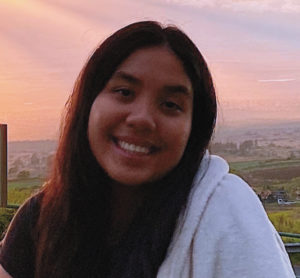
Upcoming Senior Maria Inong shares what she thinks of the new version of the traditional school year. While the state enforces social distancing measures in schools, Inong states many schools might not have the capacity to facilitate proper measures due to a lack of space. “I feel that schools with a low amount of students and a lot of class space on their campuses are equipped to hold on-campus classes this upcoming year. However, to the schools with a large number of students, with or without a considerable amount of space, I believe having on-campus classes will not be a smart idea.” Inong, a student at Maui High uses her campus as an example. “For example, I go to Maui High School and we already have a limited amount of classrooms that hold close to two thousand students. A school with almost the same size as ours would not be equipped well for this upcoming school year.”
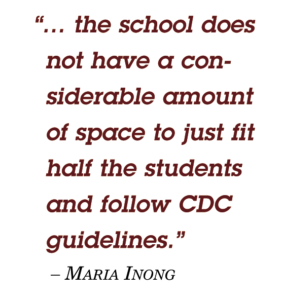
Out of the three options offered, Maui High has adopted a hybrid schedule. Inong shares her take on her school’s decision. “Personally, the Model C or Hybrid would fit perfectly at our school. We have so many students it would be impossible to safely put all of us together like a normal school year. Even with the Model B or A/B Two Day Rotation Learning Model, the school does not have a considerable amount of space to just fit half the students and follow CDC guidelines.
As a member of her school’s student government, Inong foresees what impact the new regulations will have on her last year of high school. “Unfortunately, I see this pandemic taking a toll on our senior year/school festivities, like Senior ball, homecoming, Saber Family Fun Night and many more school events,” Inong says.
Entering her Senior year, Inong explores how COVID-19 will affect the college application process as many schools have opted to go test-optional. “In the midst of the pandemic, colleges have already modified their admission requirements, making SATs and ACTs not required for the admission of the next school year. This will give individuals a better chance of getting into their dream colleges.”
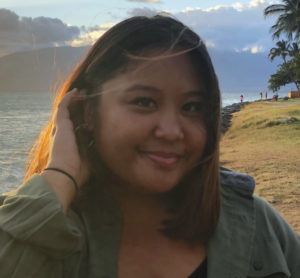
Sophomore Maui High School student Chayse Ramos offers her take on the 2020–21 school year. Because of the pandemic, schools have increasingly relied on digital modes of learning and Maui High is no exception. Though one of the safest options, Ramos has concerns surrounding technological issues and accessibility. “I expect there to be a lot of complications with holding classes online whether it has to deal with technological issues or the fact that not all students have access to the internet or an electronic device.”
With school being a social hot spot for many, Ramos sees a negative impact on communication between students at school. “Also, I feel like this will be an emotional adjustment for students not being able to be around their friends anymore and not having much social interaction. This is a trial and error situation.”

Dubbing the new school year as a trial and error situation, Ramos sees some gaps in student placement on campus. “I do not feel that schools are properly equipped to hold students on campus this upcoming school year because classes are full with nowhere else to put students, we are still unsure about the safety protocols for using the bathroom and walking class to class as well as recess and lunchtime.” Even so, Ramos commends the DOE for its measures to keep the Hawai‘i student population safe in a time of uncertainty. “I feel like the DOE is trying to find ways for us to adjust and that they are trying their hardest to accommodate everyone and keeping everyone safe. I feel like their proposal is understandable and I know it’s hard to come up with solutions right now.”
Though it is a reasonable reaction to a pandemic, Ramos sees mixed impacts on her school population. “I feel like everyone will react in different ways, some teachers and students may love the fact that we’re doing some classes online and some may hate that, thus leaving teachers and students subjectively less or more motivated.”
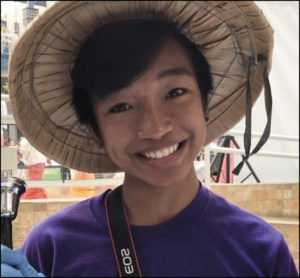
Norlito Ranchez, an upcoming Junior at Maui High School shows what he thinks of the upcoming school year. “My expectations for school during this pandemic is obviously for everyone to be safe and not catch the virus when we now have the chance to go back to learn. The cafeteria should also take extra precautions when handling food for students. Students need to bring hand sanitizers when they are in their class. They should wipe their tables before and after going in, so once school ends, the facility has a simple time cleaning. The restroom must be stocked with tissues and hand soap. Lastly, everyone should be wearing a mask and when sick, must stay home,” Ranchez says. To him, new precautions will be a step away from previous standards. “In my honest opinion, I don’t think some schools will have what it takes to handle the number of students coming back. Although they have changed their schedule, schools already had situations in keeping schools clean.”
When it comes to the DOE’s model proposals, Ranchez approves of the new schedule. “I think the Department of Education model schedule proposal is quite fair and planned out well but further details should be included soon.”
Being a student who will have to conform to the new standards, Ranchez predicts how they will affect the overall learning environment. “I think the new school schedule will have a significant impact on the students and teachers. The students will be more motivated but learn less, and as for the teachers, they will be having an easier time for their job. In other words, the students will be motivated to come to school but will have a harder time learning because lessons and lectures usually take time to process to understand. With assignments due, students might often have questions and miss the chance in person. As for the teachers, they will have an easier time because they can plan assignments ahead of time.”
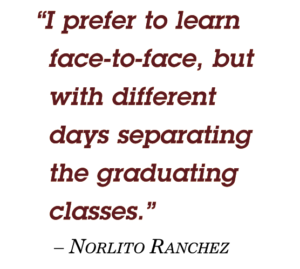
Even though Ranchez would prefer a face-to-face approach to learning, he acknowledges that the return to school puts the safety of students first. “I prefer to learn face-to-face but with different days separating the graduating classes. Also, the teachers should be the ones to switch classrooms this time as it allows fewer students to go near each other and promotes social distancing. This learning works out for me because we can create stronger bonds with my classmates around me.” Ranchez appreciates the opportunity to even be back at school despite the COVID-19 development nationwide. “School is an honor and a privilege for us because not everyone gets to have it, so if something happens, it’s a priority for the school to address the situation accordingly. This pandemic is not a joke and should be taken seriously to keep learning while also trying to have fewer cases.”
 Google® Is Not Everything is a monthly column authored by high school students. The title of the column emphasizes that education is more than just googling a topic. Google® is a registered trademark. This month’s guest columnist is Alexis Joy Viloria, a Senior at Maui High School. She is the founder and President of Maui High’s SaberScribes, their journalism club. Alexis is also a committed member of HOSA-Future Health Professional as the Secondary Representative of the Hawai‘i HOSA Executive Council and a state gold medalist. Alexis hopes to one day become a Pediatric Physician. She is the daughter of Alex and Juvy Viloria.
Google® Is Not Everything is a monthly column authored by high school students. The title of the column emphasizes that education is more than just googling a topic. Google® is a registered trademark. This month’s guest columnist is Alexis Joy Viloria, a Senior at Maui High School. She is the founder and President of Maui High’s SaberScribes, their journalism club. Alexis is also a committed member of HOSA-Future Health Professional as the Secondary Representative of the Hawai‘i HOSA Executive Council and a state gold medalist. Alexis hopes to one day become a Pediatric Physician. She is the daughter of Alex and Juvy Viloria.
